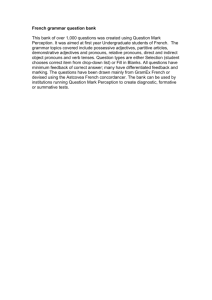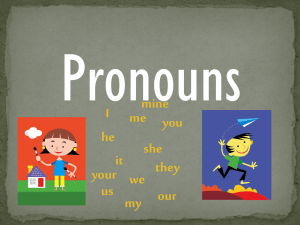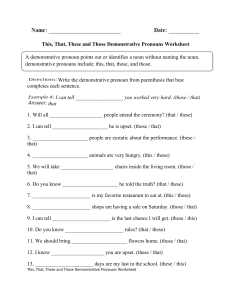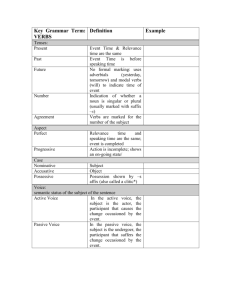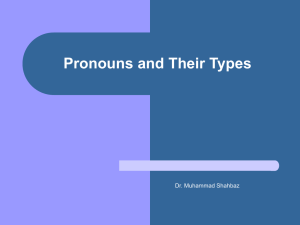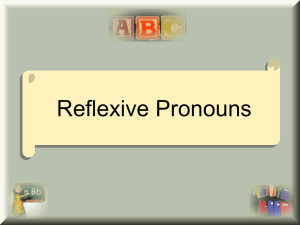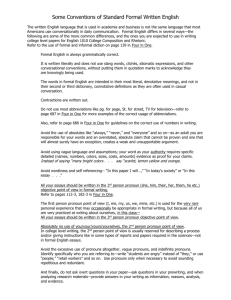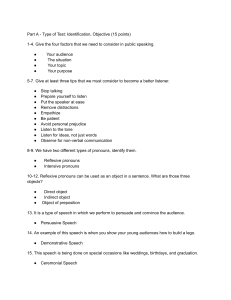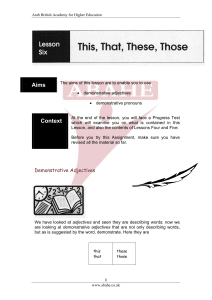Demonstrative Pronouns - Madison County Schools
advertisement
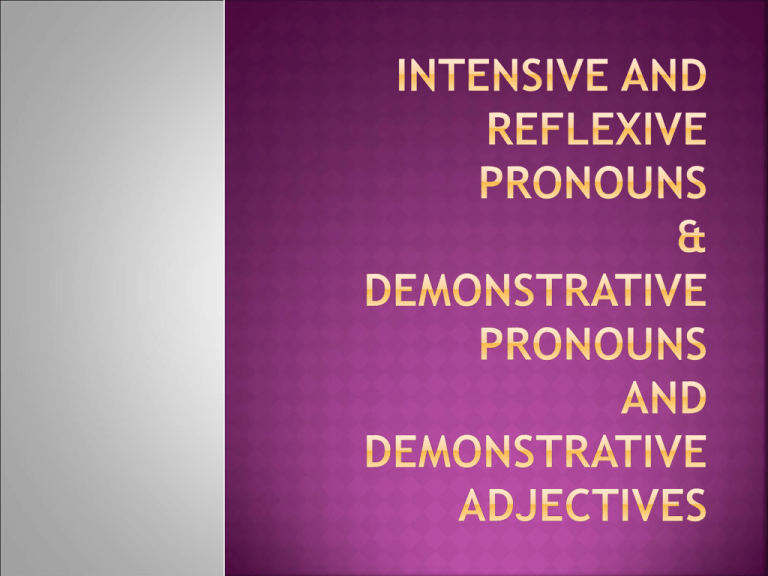
Reflexive pronouns refer to the subject and are necessary to the meaning of the sentence. ***The reflexive pronoun will serve as an object (do, io, or op) They enjoyed themselves at the football game. (Read the sentence without themselves. Does it make sense?) Jeffrey bought himself a new pair of cleats. (If you remove himself, the meaning could change.) Intensive pronouns intensify the subject but are not necessary to the understanding of the sentence. They can be removed without harm! Mrs. Autrey herself baked that apple pie. (If you remove the intensive pronoun, the meaning of the sentence does not change.) Mrs. Autrey baked that apple pie. The lady muttered to herself about the weather. HINT… Herself is the object of the preposition. A dog chased itself in the mirror. We ourselves will deliver the food packages to the needy at Thanksgiving. Points out a specific person, place, thing, or idea. Examples: That is a beautiful costume. These are the t-shirts I designed. This, that, these, and those can be used as both adjectives and pronouns. When they modify nouns or pronouns, they are called demonstrative adjectives. When they are used alone, they are called demonstrative pronouns. Examples of demonstrative adjectives: Why are these books laying on the floor? I prefer that brand of ice cream. 1. Use this pen to sign your name. 2. That is the craziest cat I have ever seen! 3. We parked in this parking lot because the other one was full. 4. All of those glasses are clean now. 5. That sounded like a sonic boom! 6. Can you understand the plot of that book? 7. Please take these books to the storage closet. 8. The dress you bought can only be worn with those shoes. 9. Those are so awesome, Mary! 10. I saw a rabbit run under these bushes. 11. Can we take those into the game? 12. This costume makes me want to scratch all over. 13. I saw the teacher go into that room. 14. May I have one of those markers, please? 15. What do you see in those clouds?
